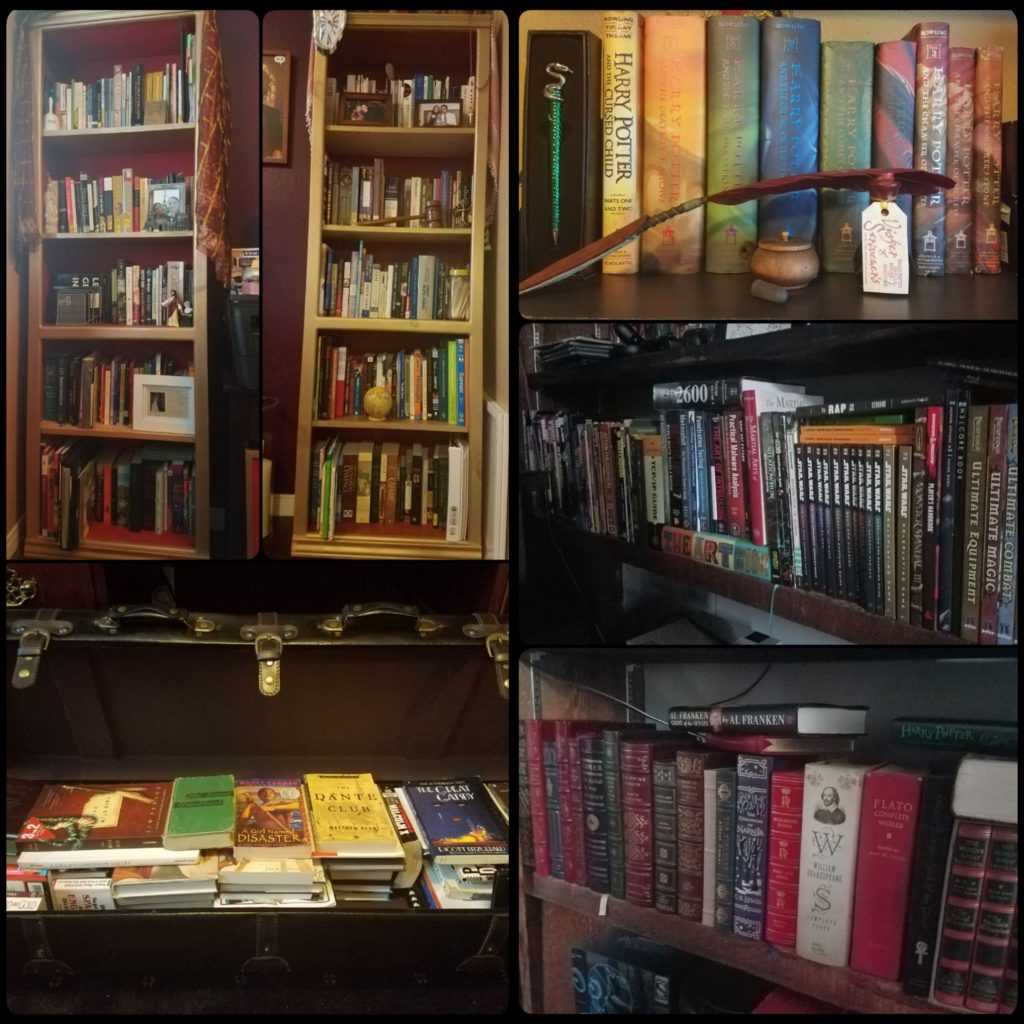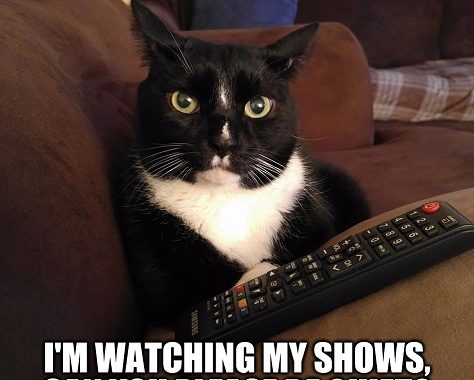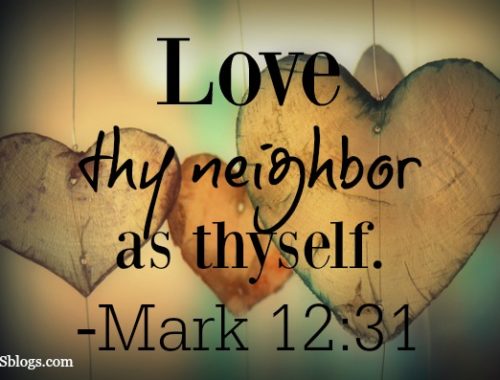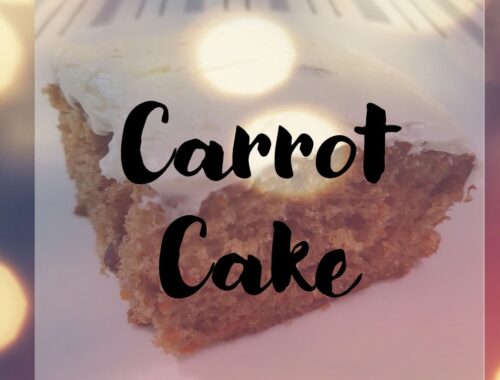
Monday Musing – Sustainability
These are just SOME of my books…

I have so many I even made shelves out of them!

and over the past three years I have easily rid myself of over 50 that I have counted. Well, today I decided to do another purge. I am getting rid of multiple copies of books, books I read but did not enjoy, and perhaps the hardest purge: books I have never read and had to silently admit to myself I would probably never read. I keep books for many reasons, nostalgia, they have been heavily annotated by me which lends to their sentimental value, or I feel like one day someone may need or want to read them from my shelf.
I went to half price books. I tried to be honest with myself and even separated the books into two tote bags, 1) the old junk that I got for pennies long ago, 2) books purchased as recently as 3 months ago which may fetch a quarter of their resale price, right? Oh so wrong….
I scoured the internet trying to find the HPB formula, if any, to save myself the time next time and frankly gas money to get there which was not worth the money they offered me. It’s not their fault. There are many factors at play here but when I decided to keep a book from the piles because it was brand spanking new and was told, “That will take $0.15 away from your offer, is that okay?” I had to laugh and agree. Why yes, I will keep the brand new copy of “Wishful Drinking” and forego the fifteen cents, thank you. Ridiculous. A garage sale would give me at least $0.50.
Inevitably, this got me thinking a lot about sustainability. First of all, I have a kindle paperwhite because I told myself years ago that although I love the tactile part of having an actual book in my hands, the flipping of the pages (they made a commercial mocking this years ago, but I submit that it’s a real thing that cannot be easily dismissed) and the clear visual of measuring how close you are to the end that often becomes the impetus for continuing a book into very late hours because you are “almost done.”
I did it to reduce how much paper I was consuming by purchasing books that could now be delivered electronically, read in the moment without leaving the house, and also save the space that the horde of newly purchased books would have to occupy. In fact, I have joked for over half a decade that the modern interpretation of the library of many of our dreams [Beauty and the Beast] would be the same ostentatiously gilded grand baroque room with ladders but empty shelves surrounding an equally mesmerizing adorned central podium displaying a beautiful golden kindle. Currently I have read fewer books on my kindle than I have actual books since the time of ownership. So that has been a bust but I remain optimistic!
How does this impact the resale of the books I already own? Well, if my recent encounter has anything to say about it, I’m better off using them for kindling if winter comes. I did think about donations but most places will not take anything that is not considered a “children’s book,” according to the HPB manager, otherwise HPB does offer a “recycling option” which I took for several of the books not taken for resale. This got me thinking about their formula. As far as I can imagine, the current selling price for the book, the store’s inventory, the condition, and demand, are the factors of the HPB formula. This got me thinking about other sustainability models, specifically clothing.
When I was in high school I shopped frequently at recycled clothing stores. It was easy because everything was pretty cheap and every time you would find something really cool that you wore ALL the time. About 6 years ago I did a major closet overhaul to rid myself of all the “childish” clothing I was lugging around. It was similar to the recent book experience except the store I used to go to was now overflowing with clothing.
You tend to shop around while they prepare your offer except now it was almost impossible to see anything because it was all so packed in. I ended up looking at the shoes because they were still easily visible but buying none. It was sad.
This wasn’t the sustainability resale model they had hoped for over a decade ago! No wonder you get cents back and clothing downright denied despite excellent care. There is just no room. The idea wasn’t to just sell to these places and continue buying brand new, there was supposed to be a cycle, except no one is buying used. These places are crammed with product and empty of customers. So far the best model I have seen that works to close the loop is H&M’s recycling program but they come with their own set of issues surrounding controversies of fast fashion.
When I purchase anything I like to feel that I am making an investment; that the return I receive from the product will far surpass my purchase price with quality and over time but I am worried. I think about how books are far more expensive to buy than what they are worth resold (even if it was a great story) thus pushing into the category of luxury [not to mention having the time it takes to read them], that writers still need to make a living, that my local library keeps getting further and further away.
Kindles and comparable products are onto something for sure, but in the meantime, what do we do with the many books that adorn our homes, offices, closets, and storage units? Think about starting a book swap with your friends and do it 2-4 times a year. If you want a book back make sure you set up the ground rules that way and ensure your participants respect that. Keep an online ledger; Facebook groups are a good way to moderate trades and hopefully encourage some lively discussions as well! We started with our idea of the 52 Challenge.*
I believe that next year with those frequent participants that we may be able to set up a “borrow cycle” of the books read the previous year! Wouldn’t that be something!
*52 challenge – a concept credited to Mr. Safady for wanting to encourage reading for himself and his wife. The goal was to average a book a week for the 52 weeks that are in a year. Obviously, a lofty goal, we created a Facebook group and invited participants to create photo albums where they would upload a picture of a book cover once completed, offer some brief words of review, and encourage one another to continue on! Some discussion has occurred among mutual reads among people who have never met! While many of us are not near the 52, it has invigorated the participants to read more books this year alone than had been read in previous years! You should try it!
You May Also Like

Top Three Thursday – TV Series I’m Eager to Continue…
June 21, 2018
Monday Musing – Not a Partisan Issue
June 25, 2018

2 Comments
Jonathan
That sounds like a performance art space about the demystifying effect of technology on life and expectations, written on a little white notecard before the gallery entrance:
Massive empty shelves, central podium, Kindle.
VF
Let’s make it happen!